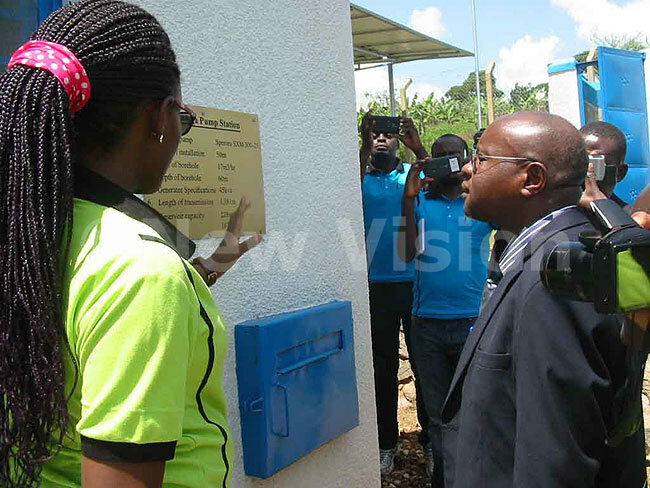Kamwenge villages get sh3.6bn hybrid water system
Construction started in 2013 and was completed in 2017.
PIC: Dominic Kavutse commissioning Kabale-Keishunga-Kabuye piped water supply systems. (Credit: Noah Jagwe)
ENVIRONMENT
Two water sanitation supply systems of Kabale-Keishunga and Bitojo-Byantumo-Nyabubare are serving water to the areas of Keishunga, Kabale and Kabuye in Biguli sub-county, Kamwenge district.
The water projects, funded by Water for People up to a tune of about 3.6b, have been designed to serve five of the 10 villages of Biguli sub-parish and other 10 in Kabuye parish.
Construction that started in 2013 and was completed in 2017 was also supported by the water and environment ministry, Kamwenge district local government for technical support and Biguli sub-county by manpower.
Dominic Kavutse, commissioner at the urban water supply and sewerage Department, said the water supply and sanitation project is a good model serving communities, such as schools and hospitals.
While commissioning the projects, Kavuste said some NGOs have conducted workshops and done social mobilisation, but have realised nothing tangible.
"I thank you (Water for People) for setting a good example for others. As government, we need assets, not capacity building."

Bitojo-Byantumo water supply and sanitation system is served by two production wells with a total yield of 13,000 litres per hour while the Kabale-Keishunga system is also served by two production wells with a total yield of 26,000 litres per hour.
"These yields are sufficient to meet the demand of three and 12 villages, respectively, until the year 2038," Diana Keesiga, the project co-ordinator, said.
Keesiga further said prior to the construction of the water project, communities were sharing water from ponds with their animals.
She revealed that the two water systems will supply water till the year 2038 when the population has risen to 31,149.
Cate Zziwa Niwamanya, the country director of Water for People, urged the residents to protect water catchment areas and wetlands.
The organisation restored a number of wetlands to recharge the boreholes and reservoir.
Komau Simeon, the chairperson of Biguli sub-county local government, said despite the increased safe water coverage from 23% to 80%, the tariffs are still high.
He said a jerrycan costing sh200 and sh6000 per unit are on the high end for the "vulnerable" low-income earners.